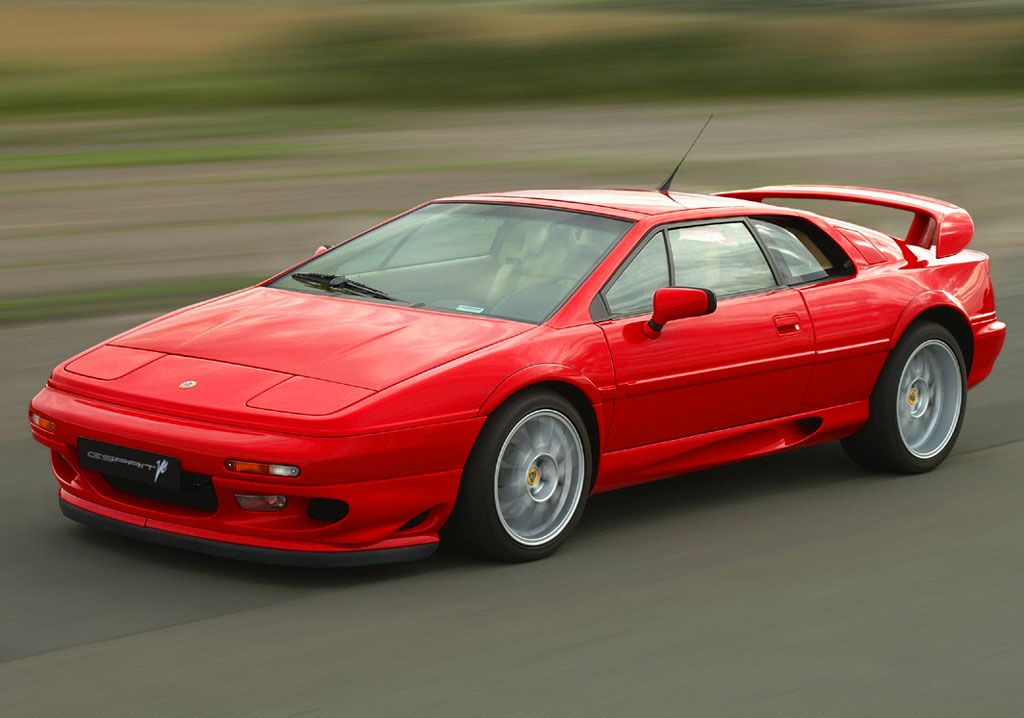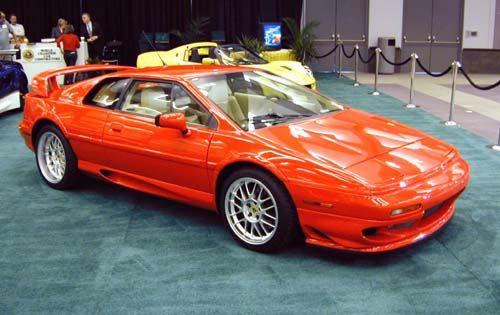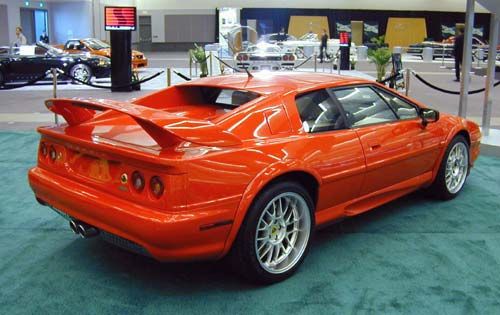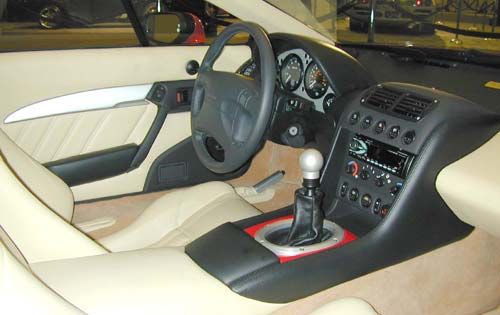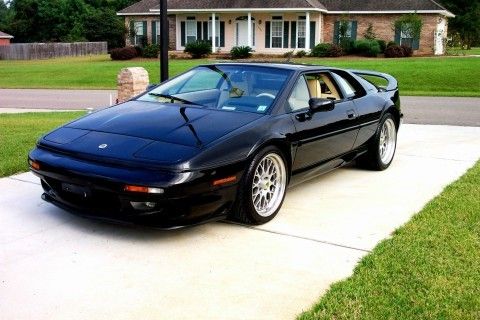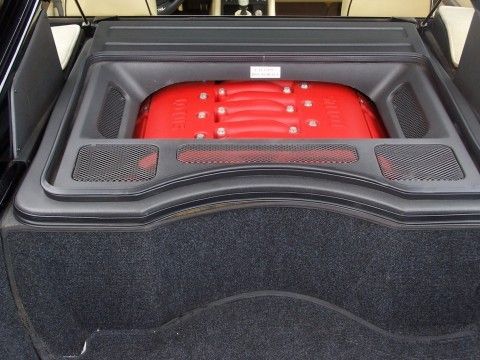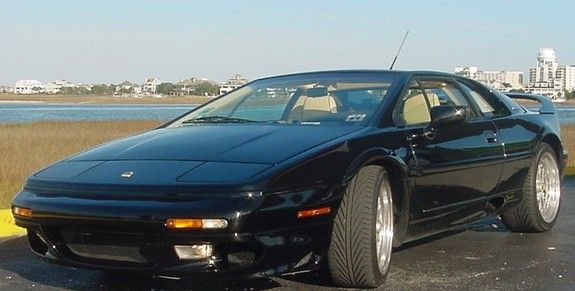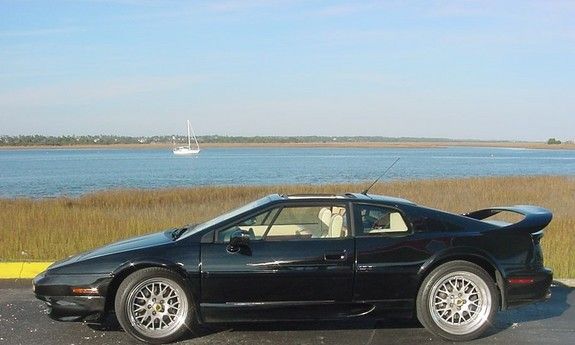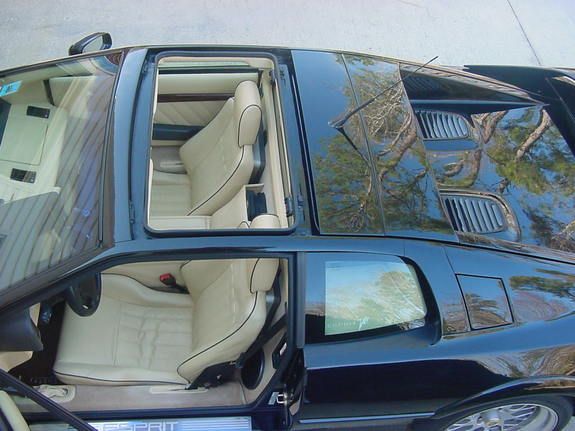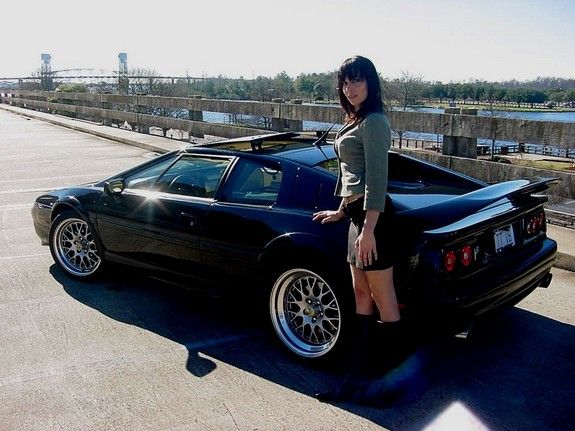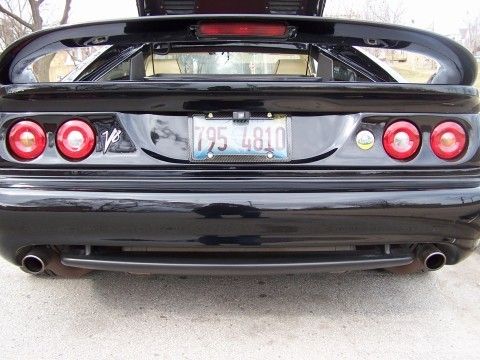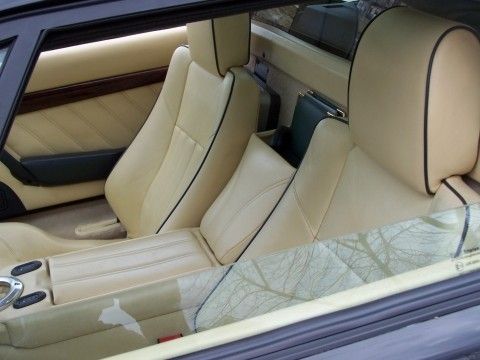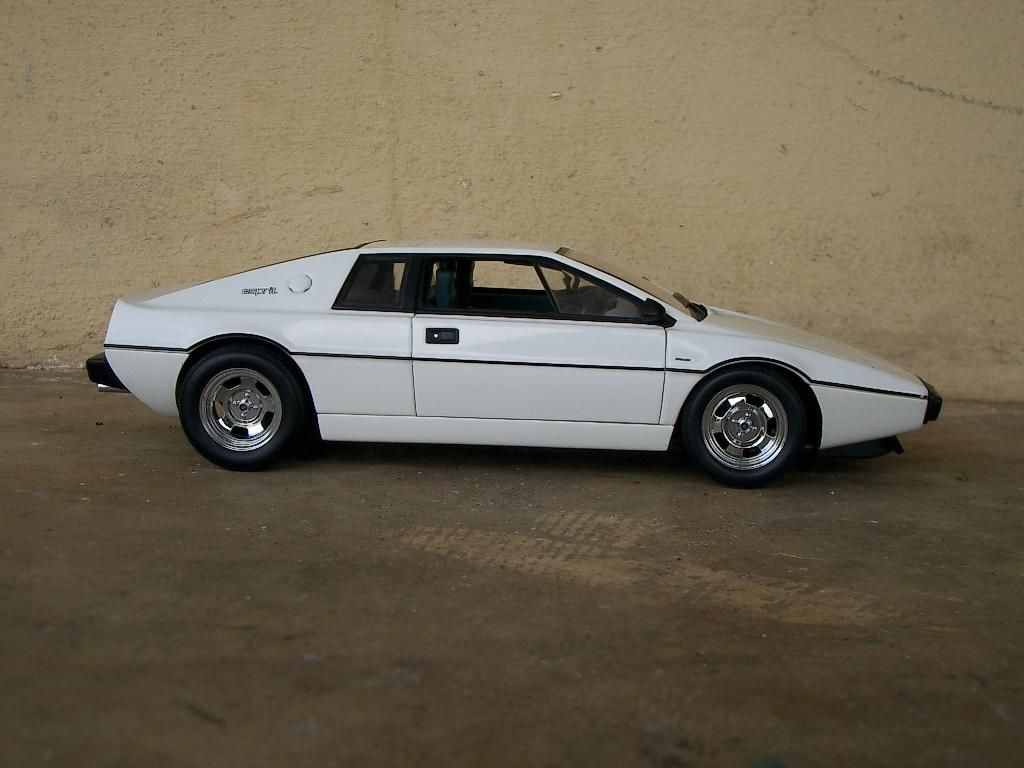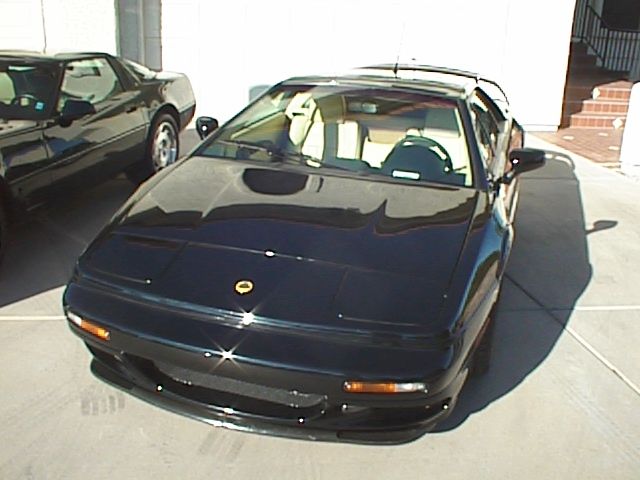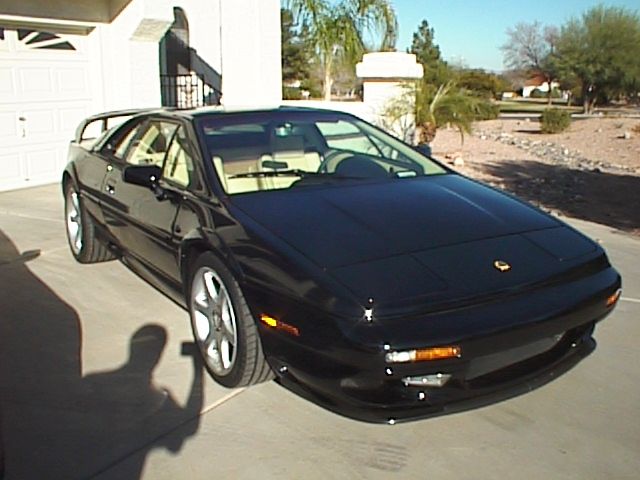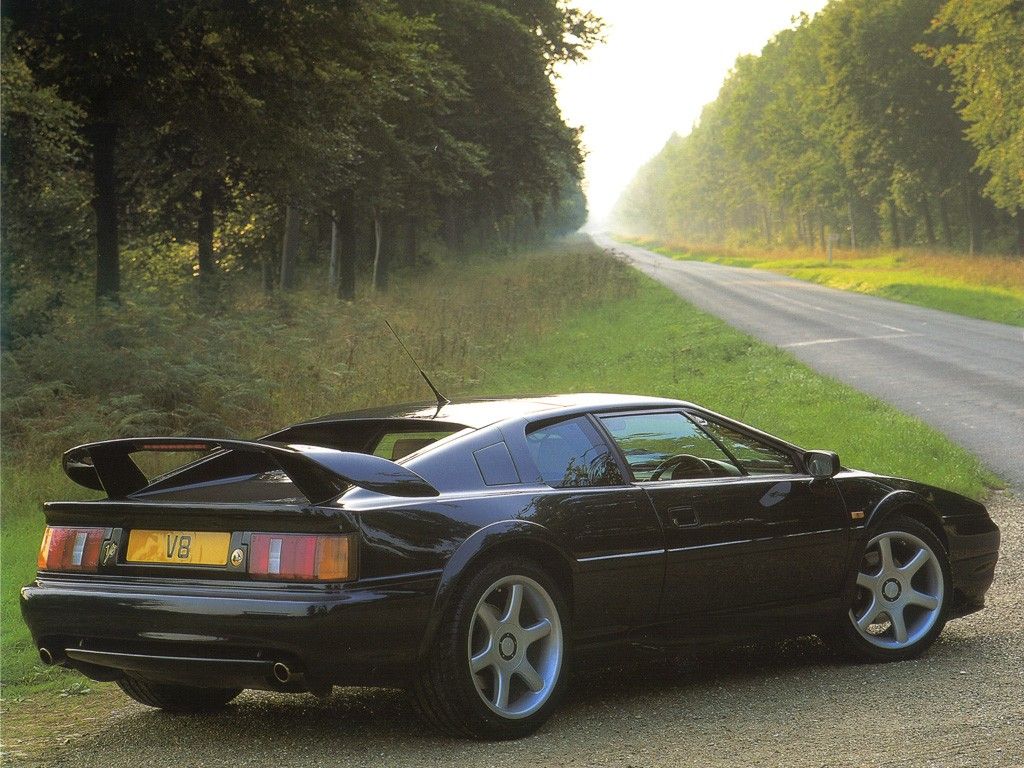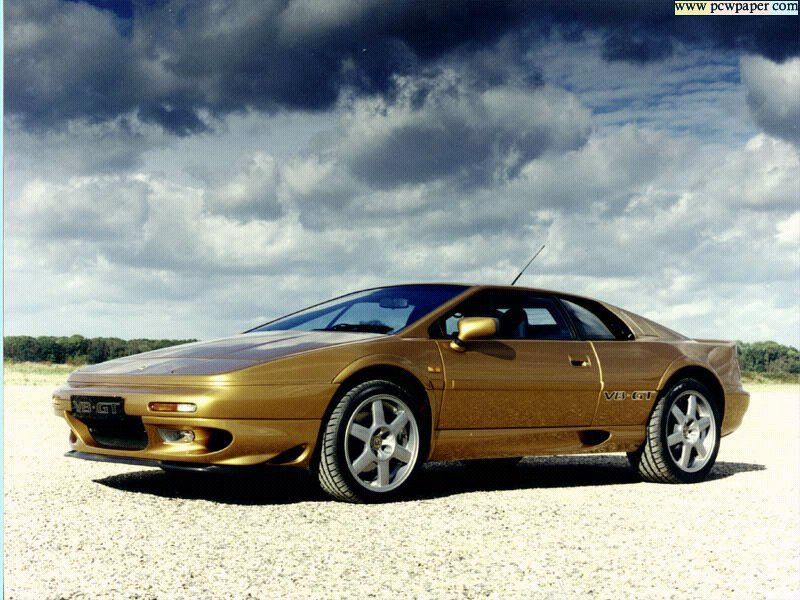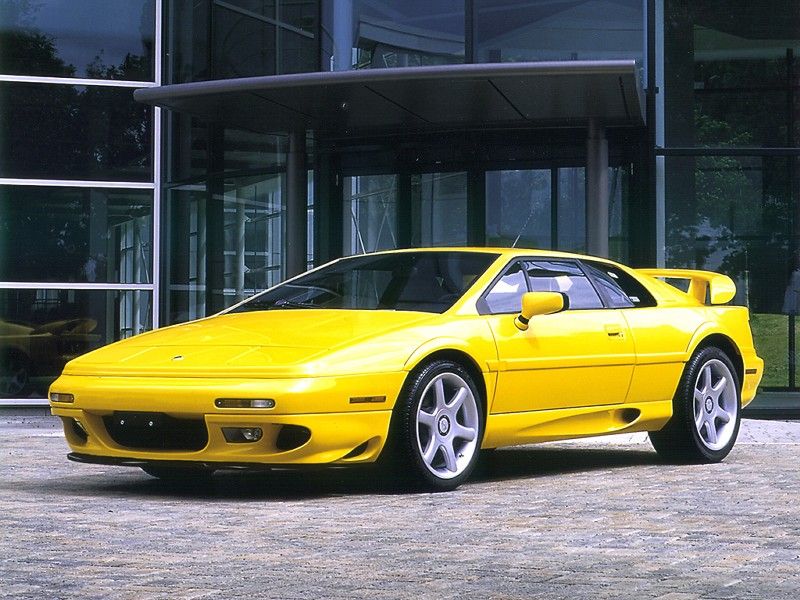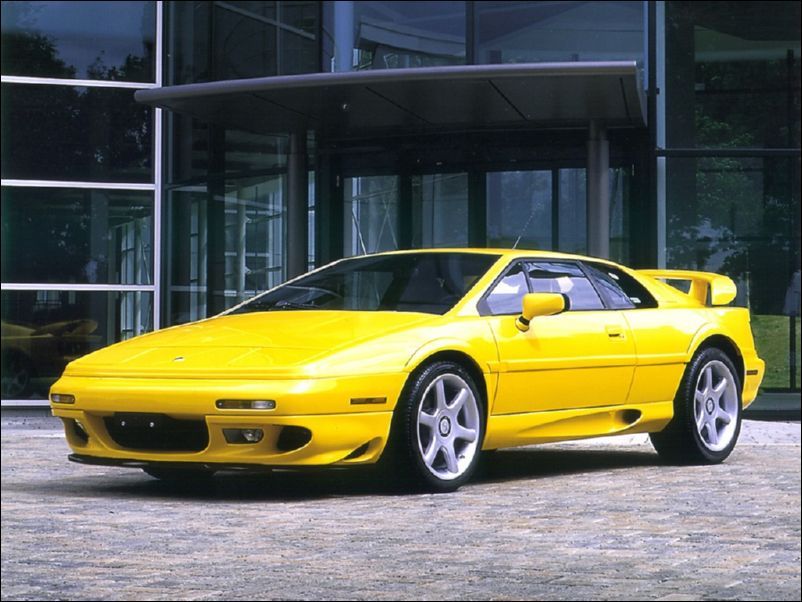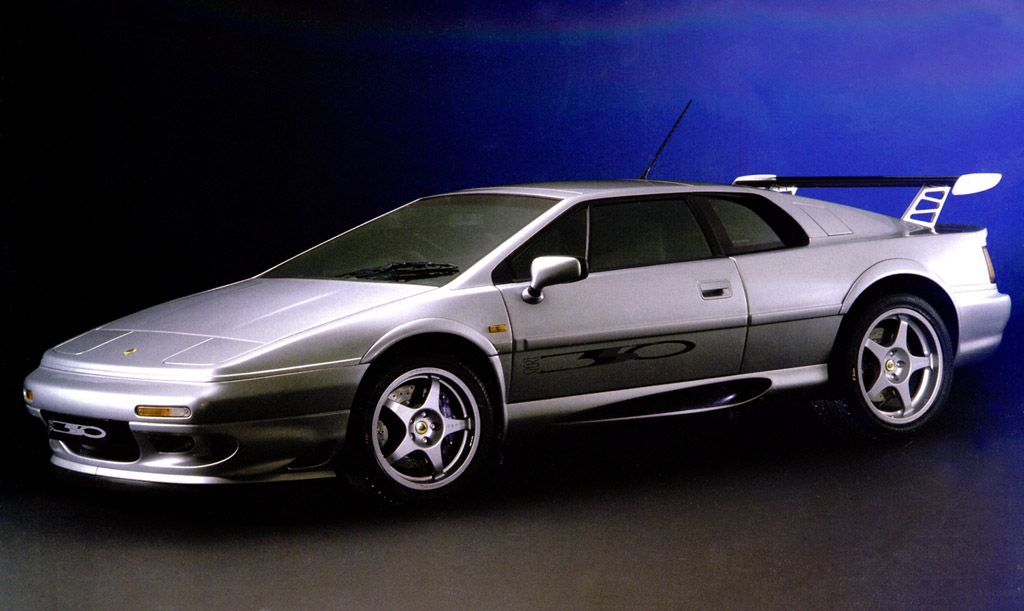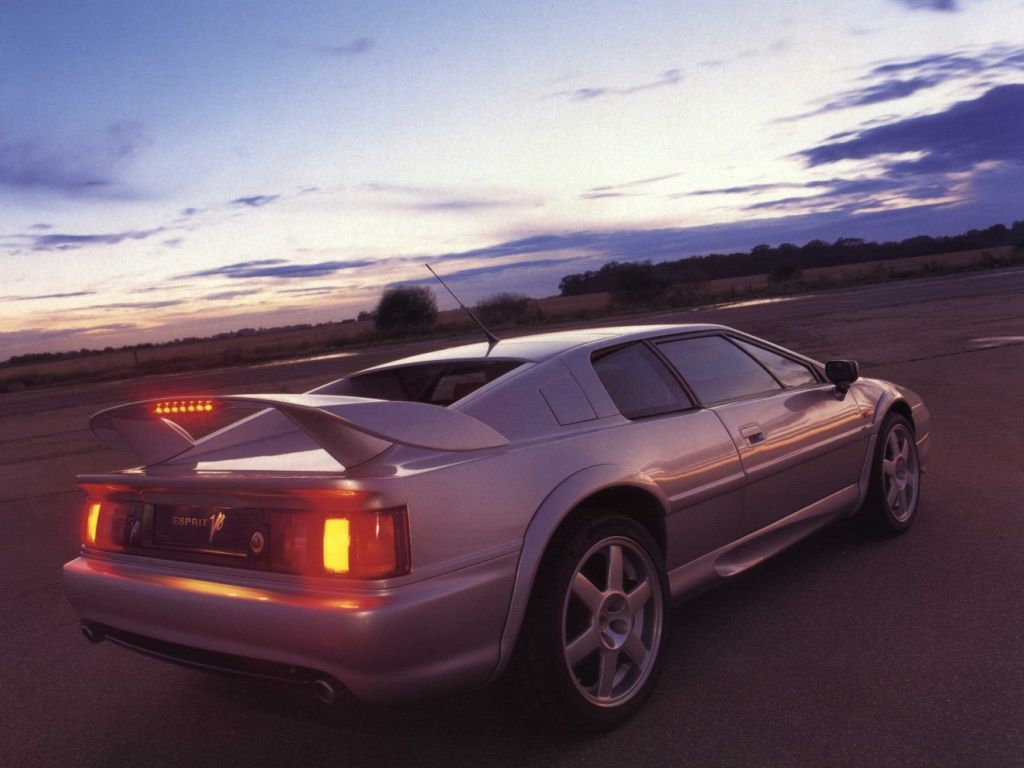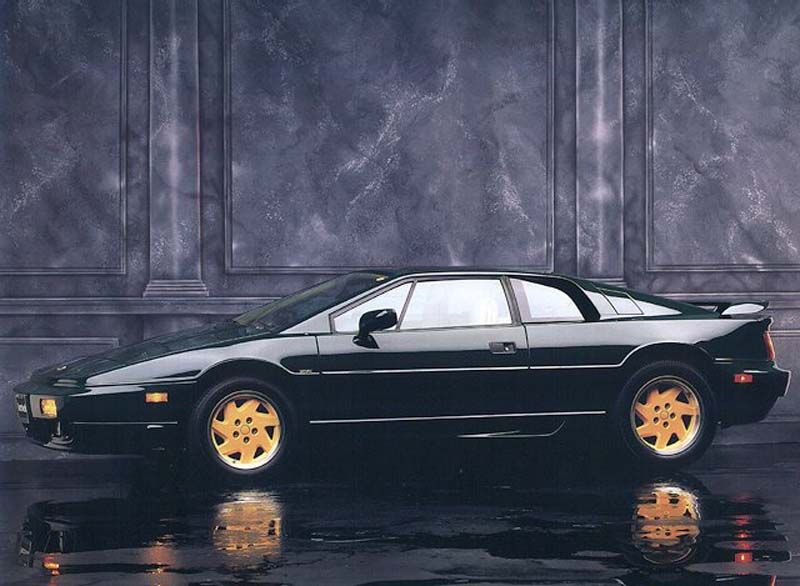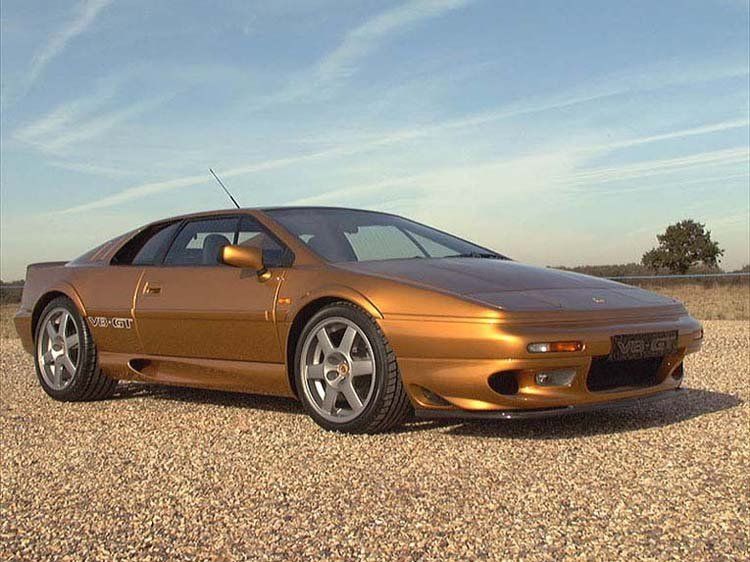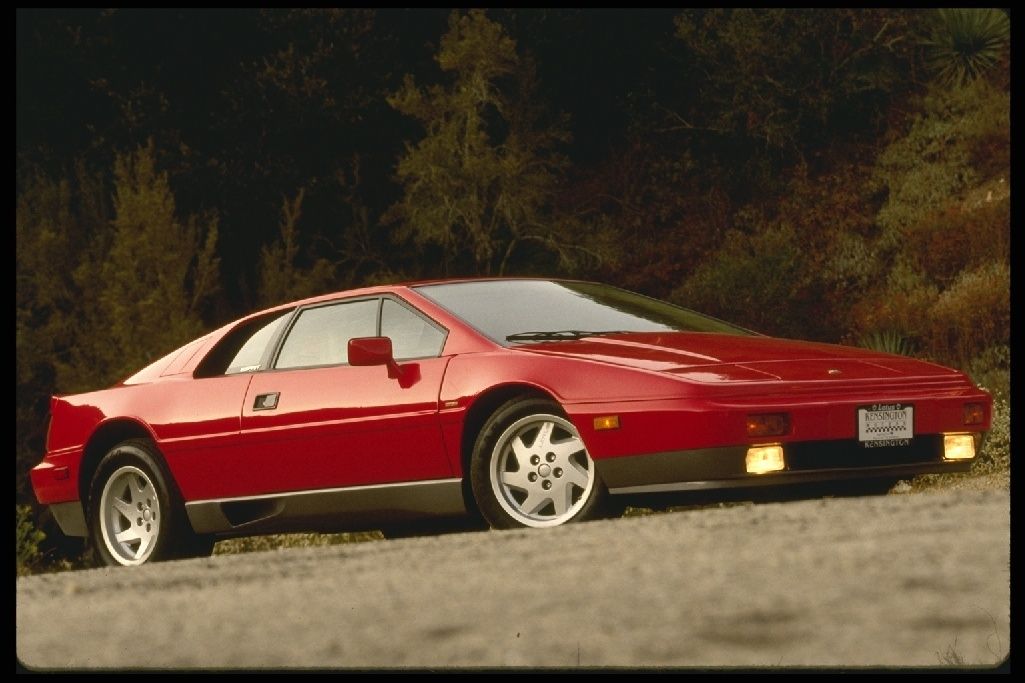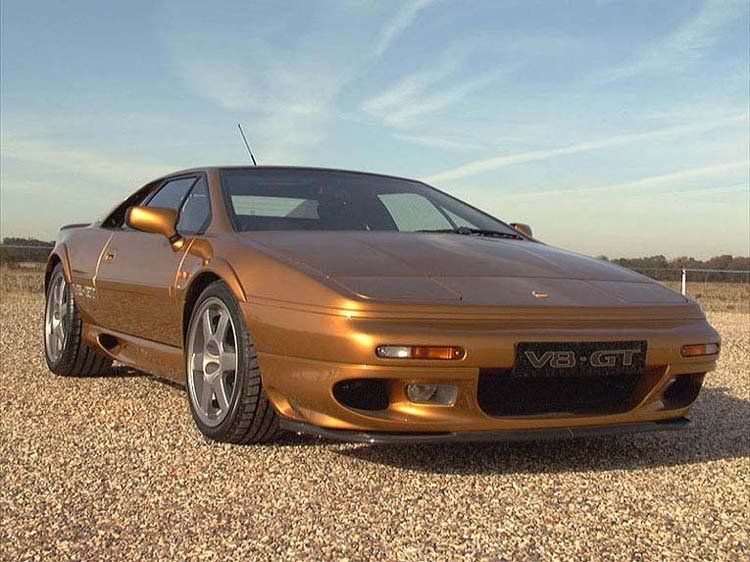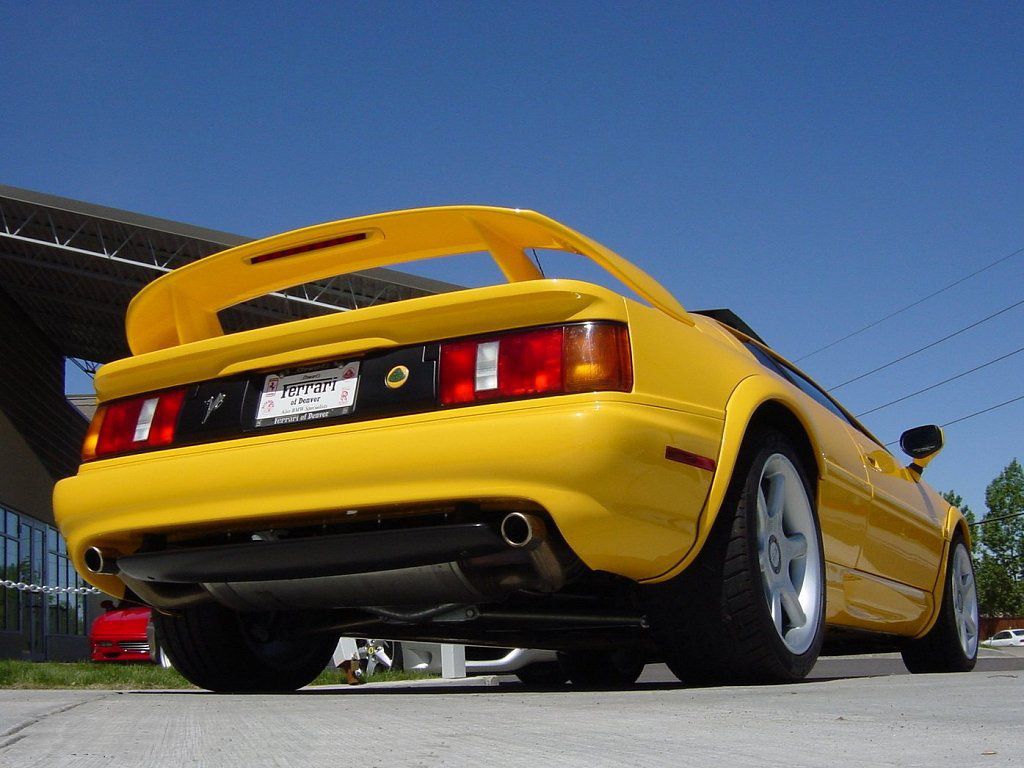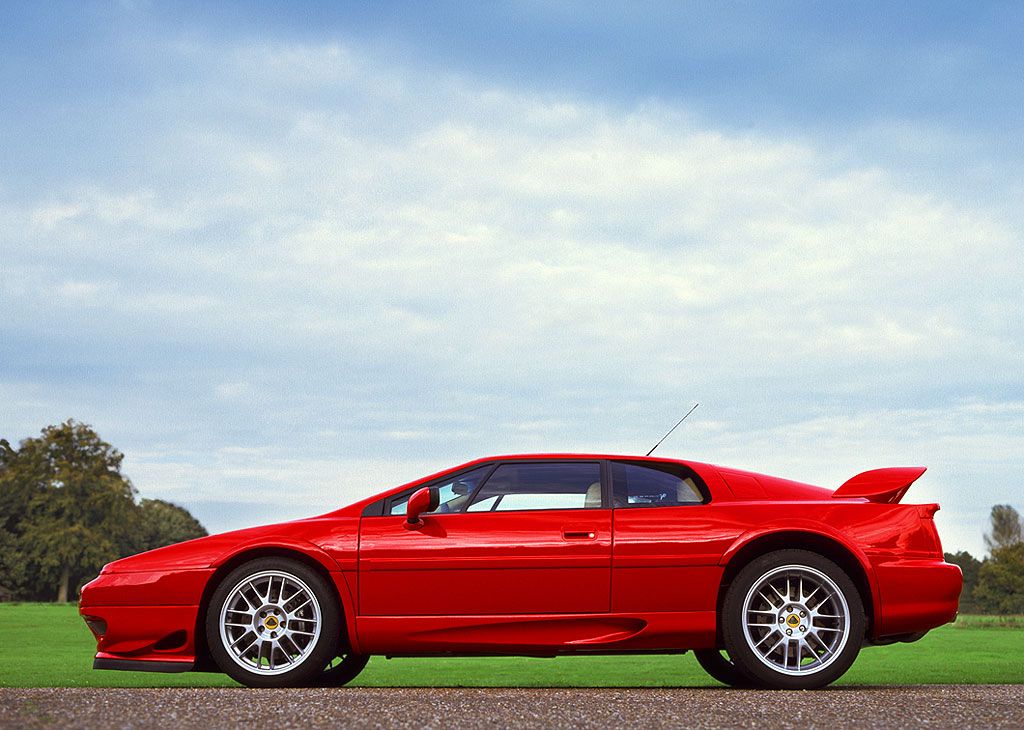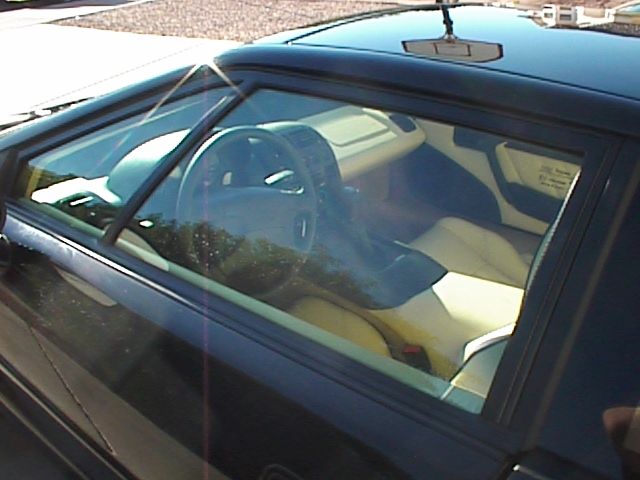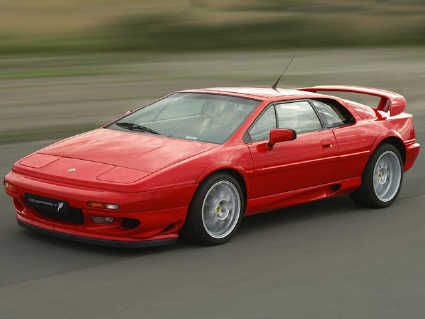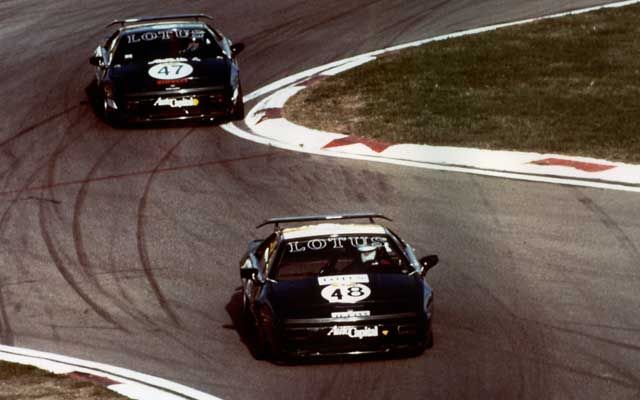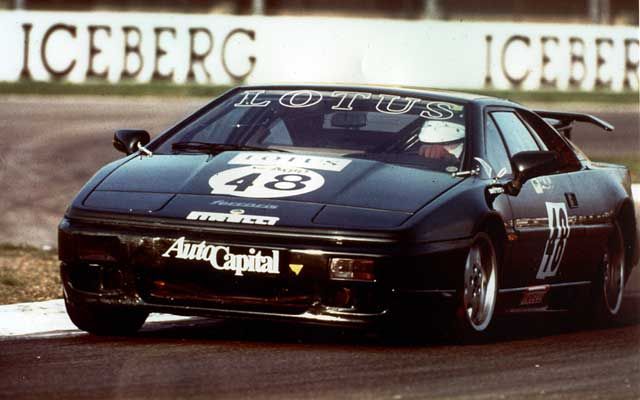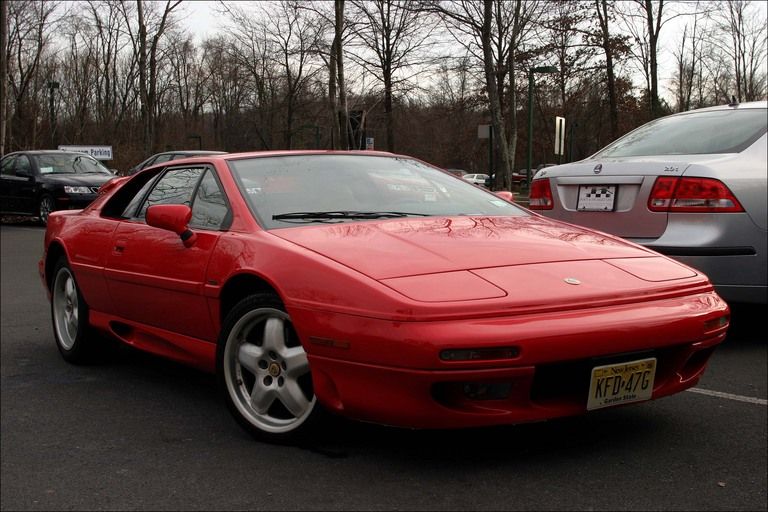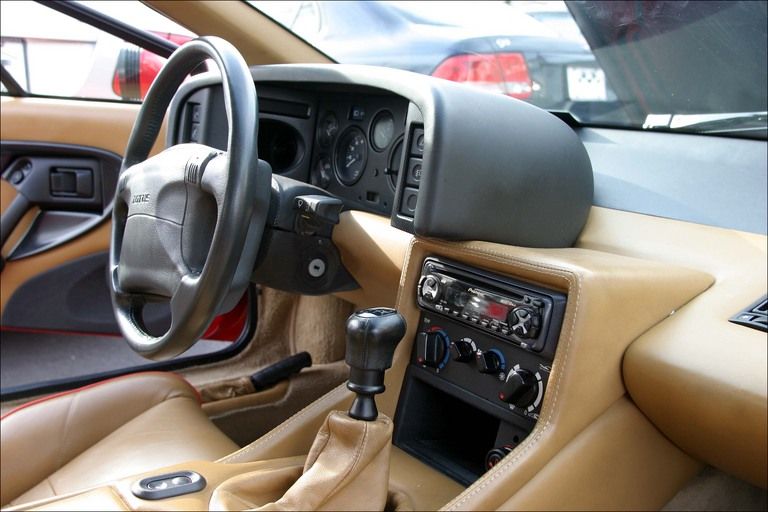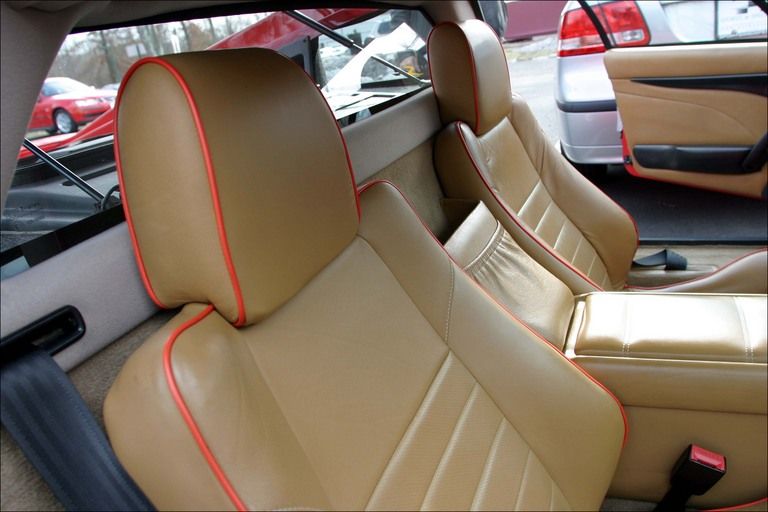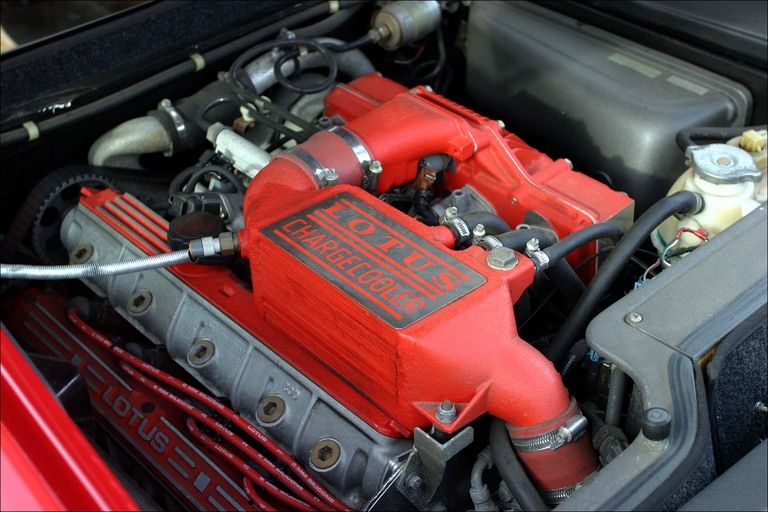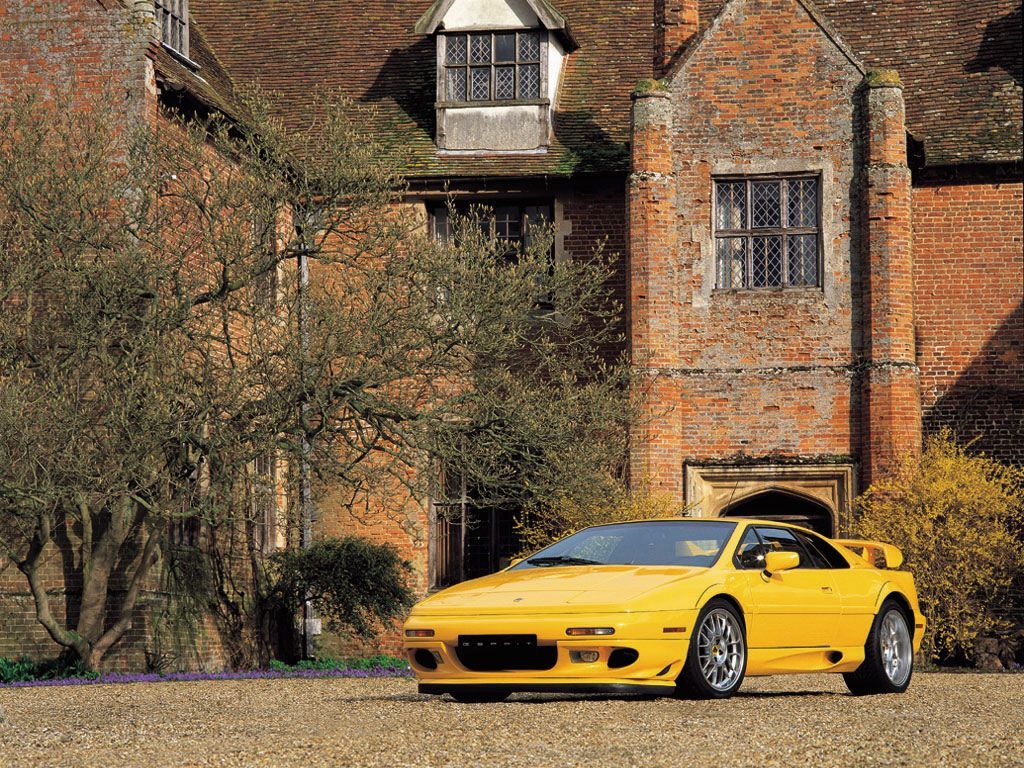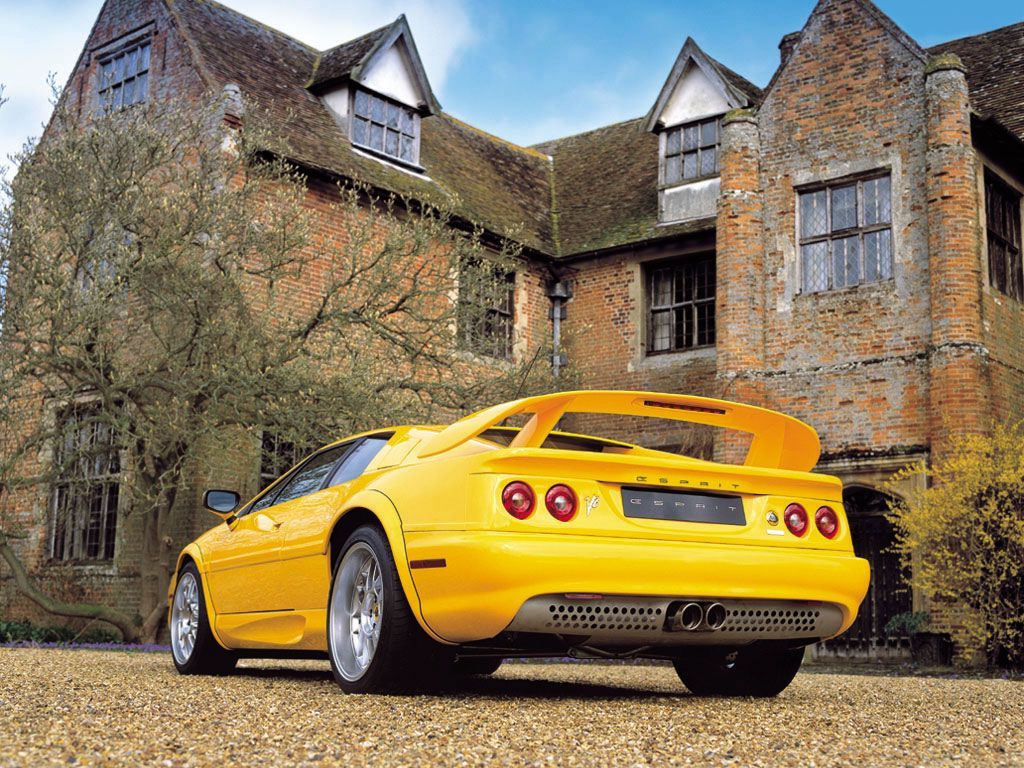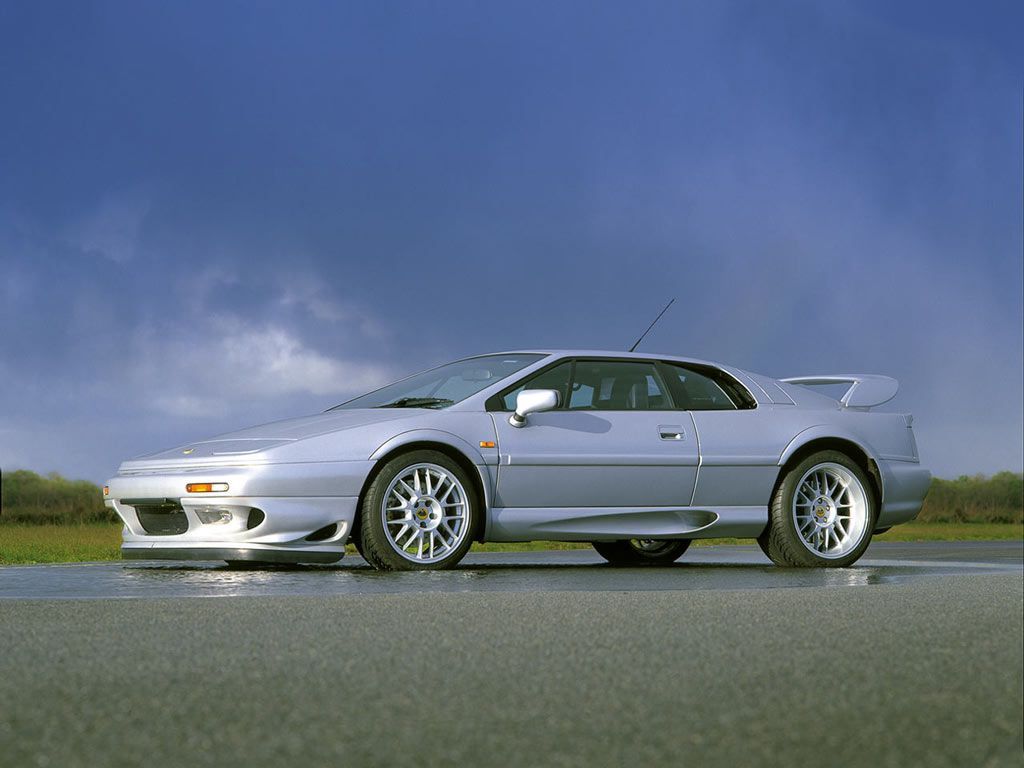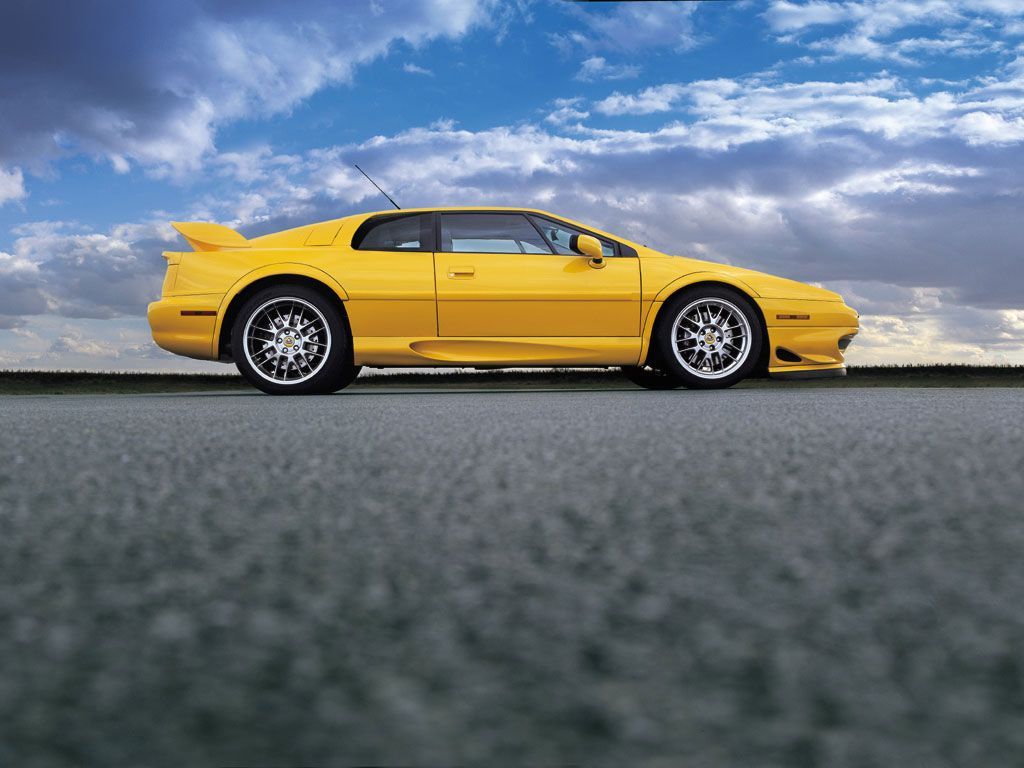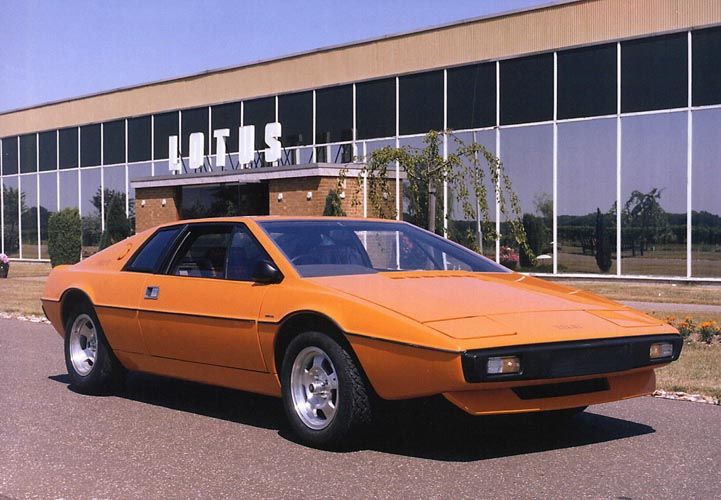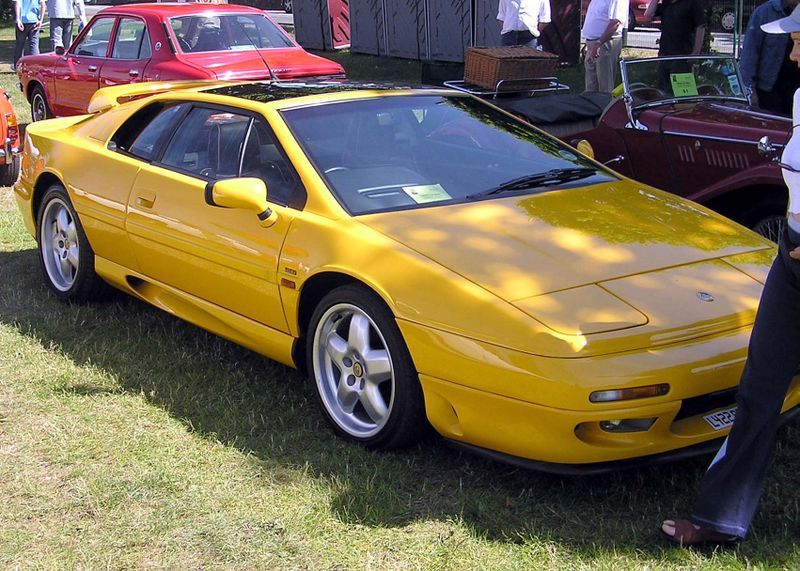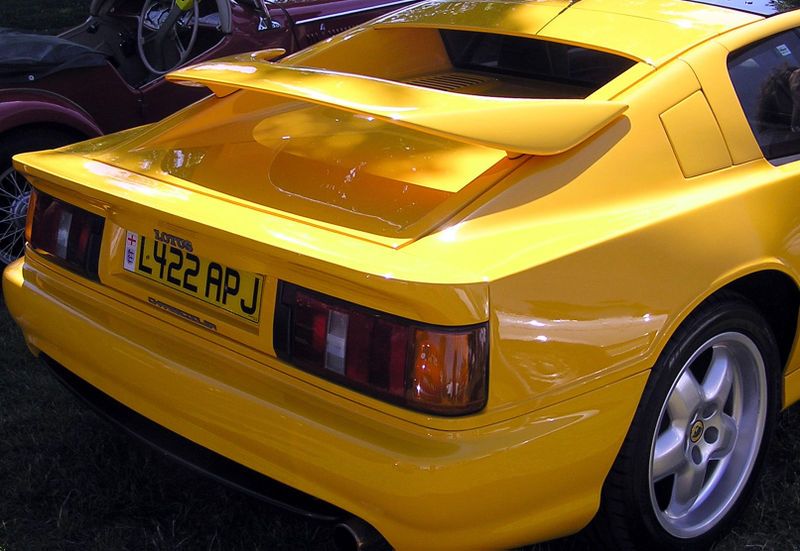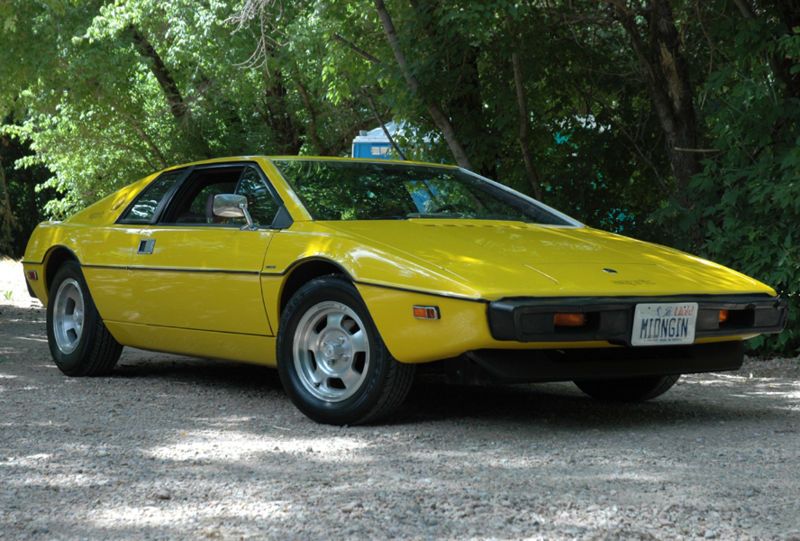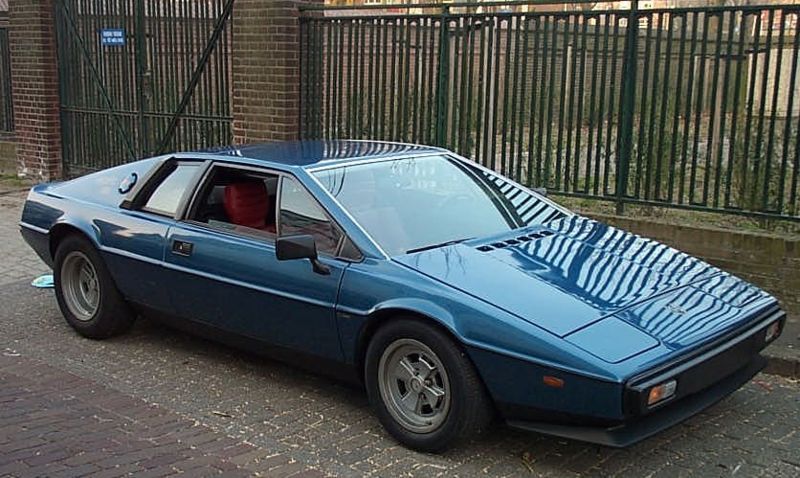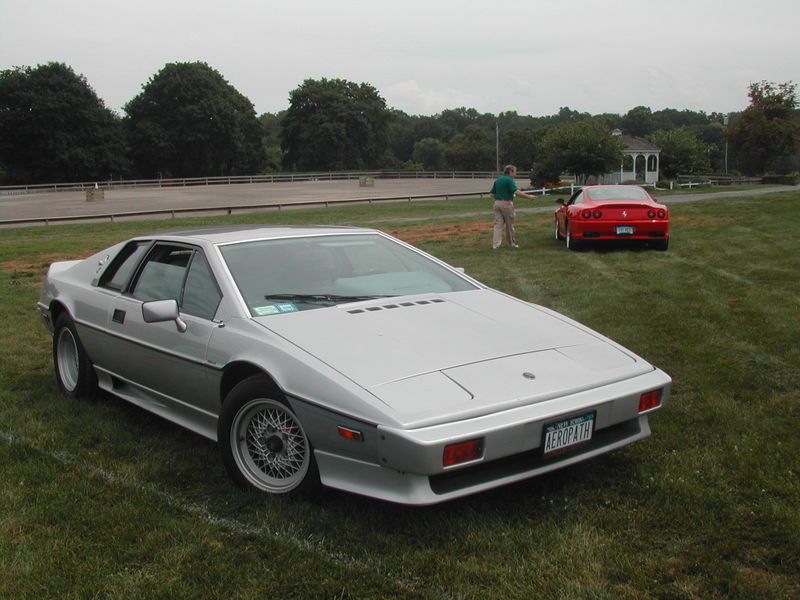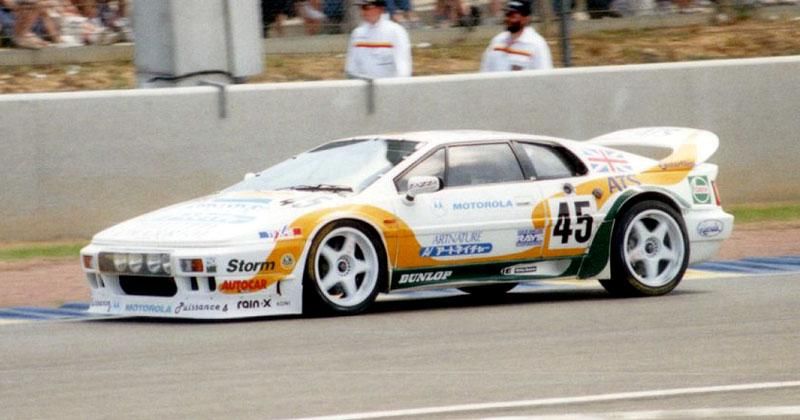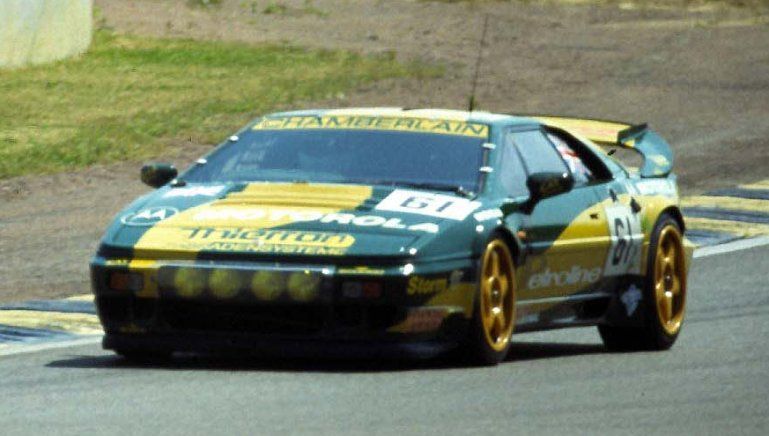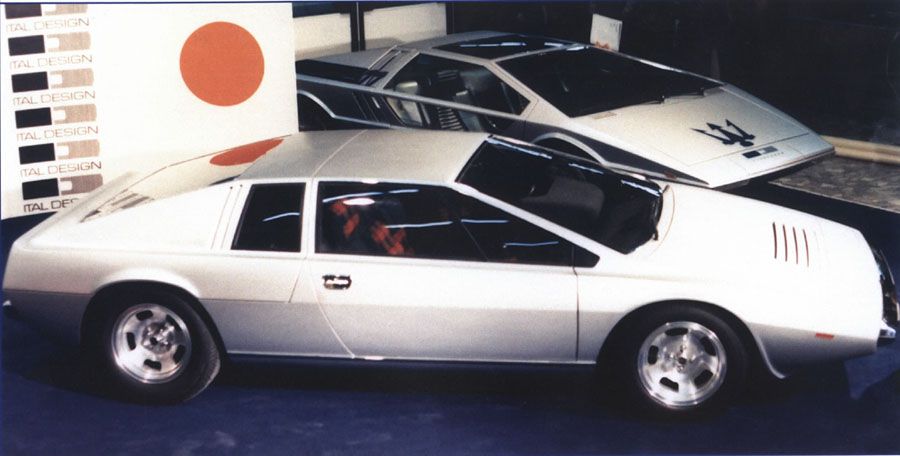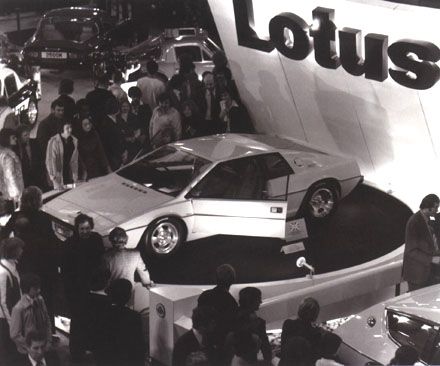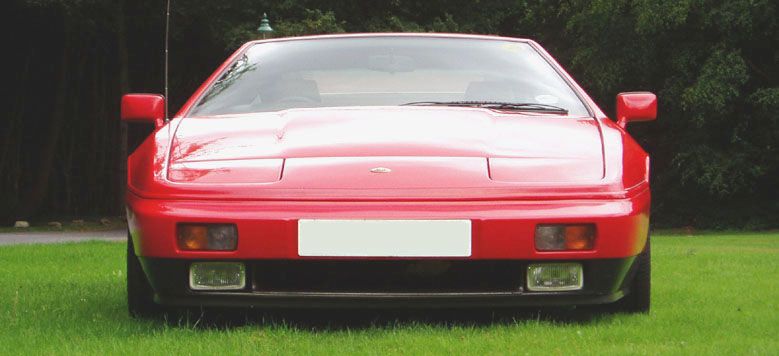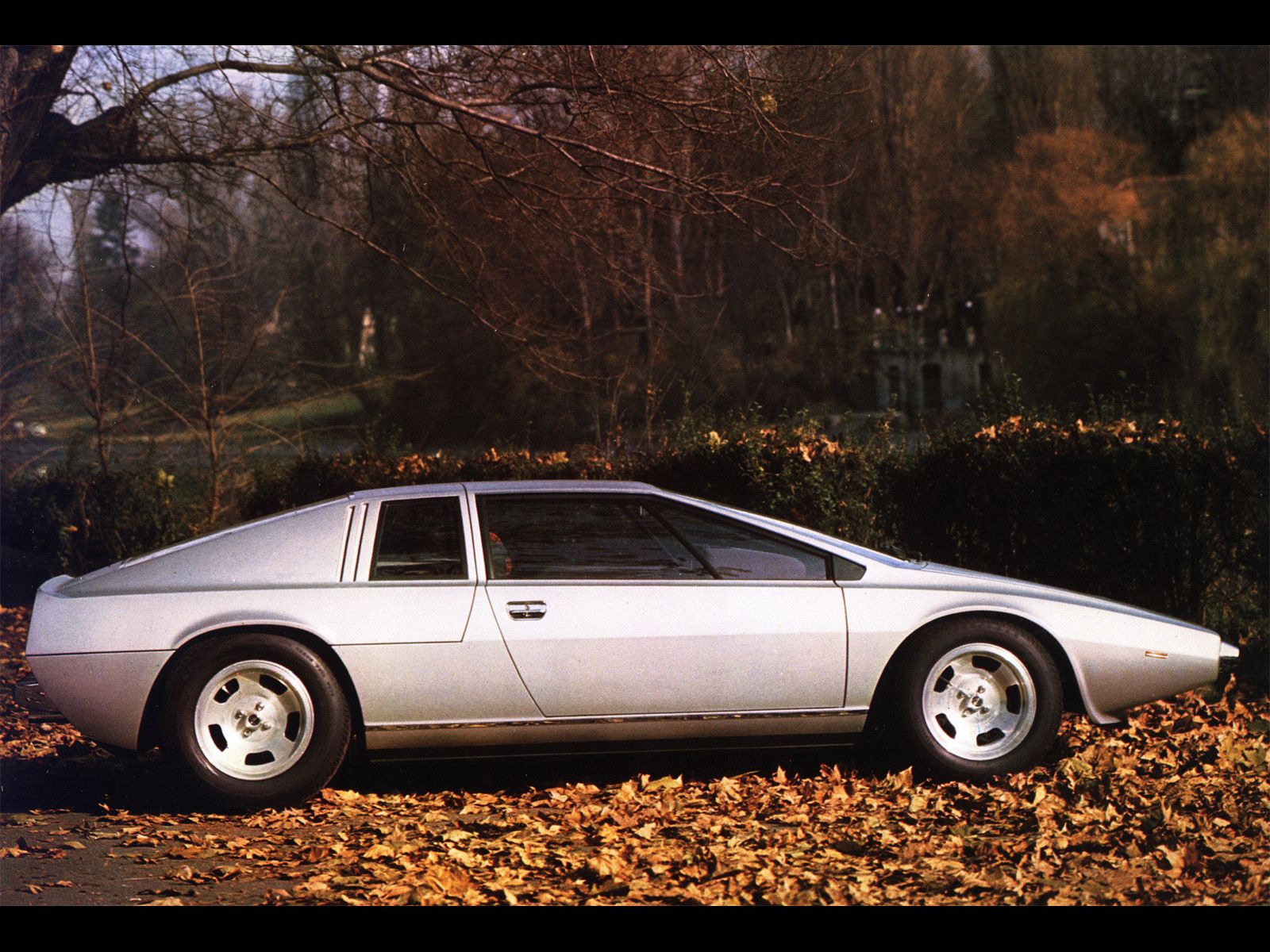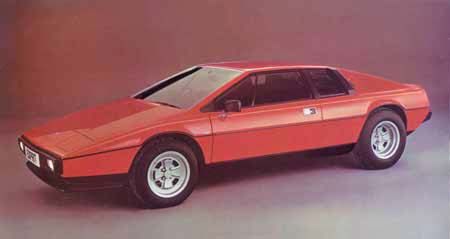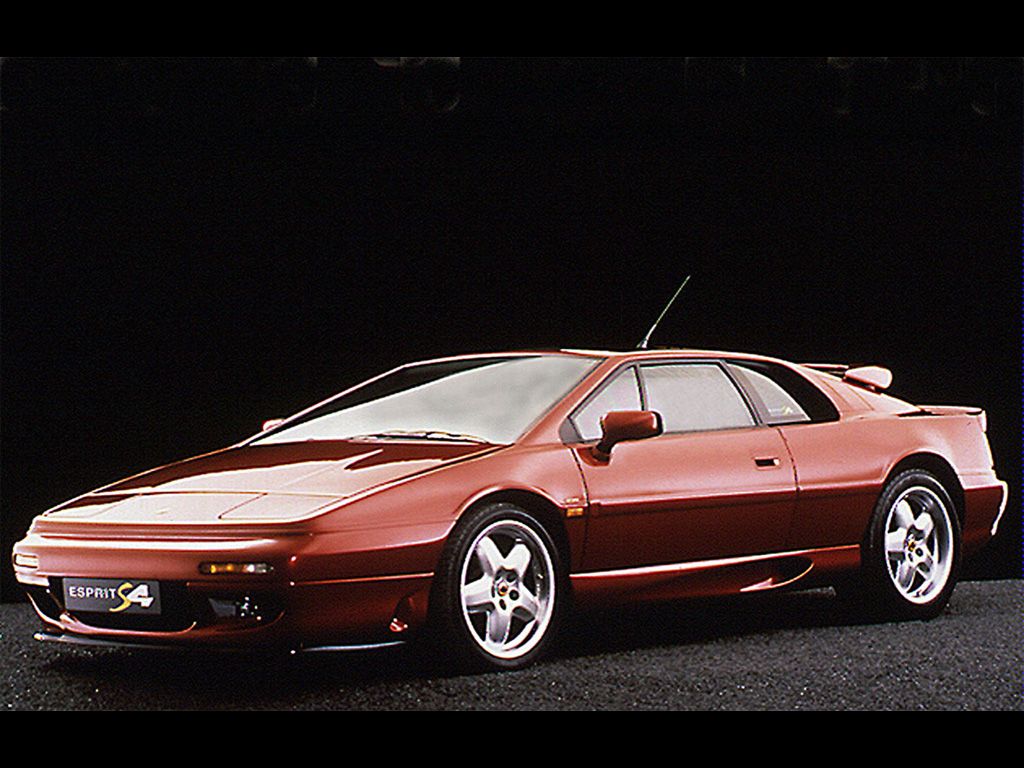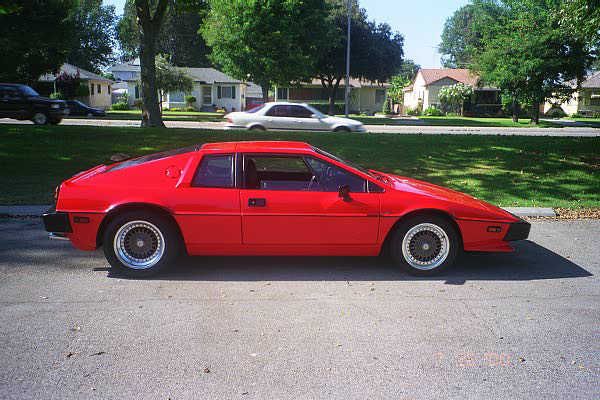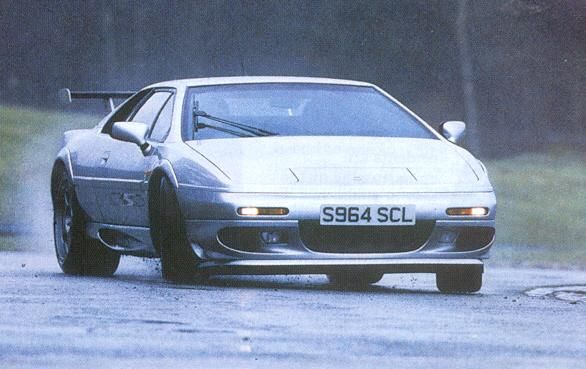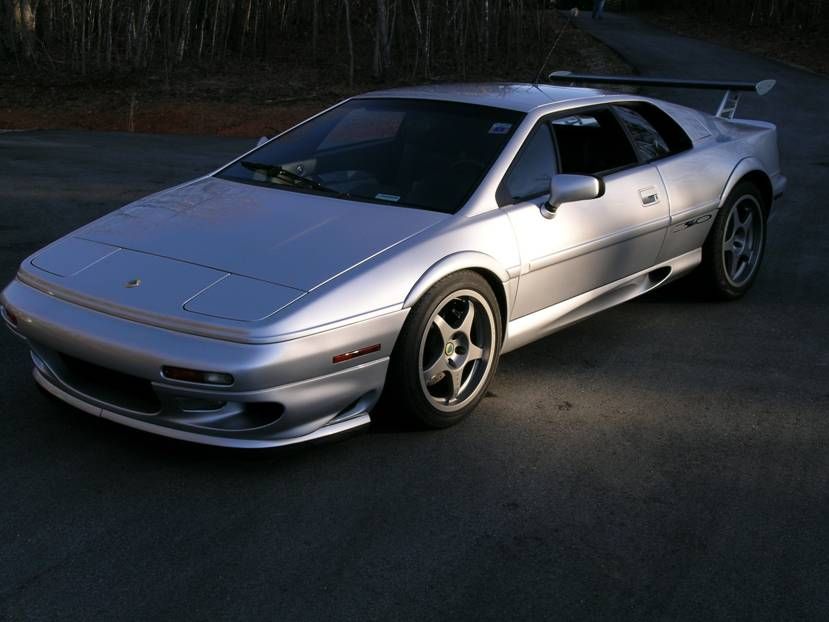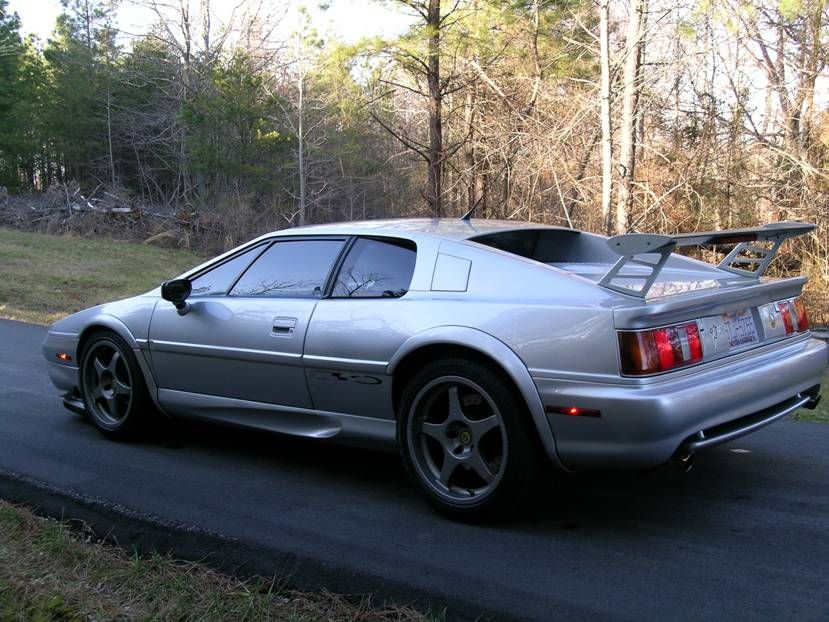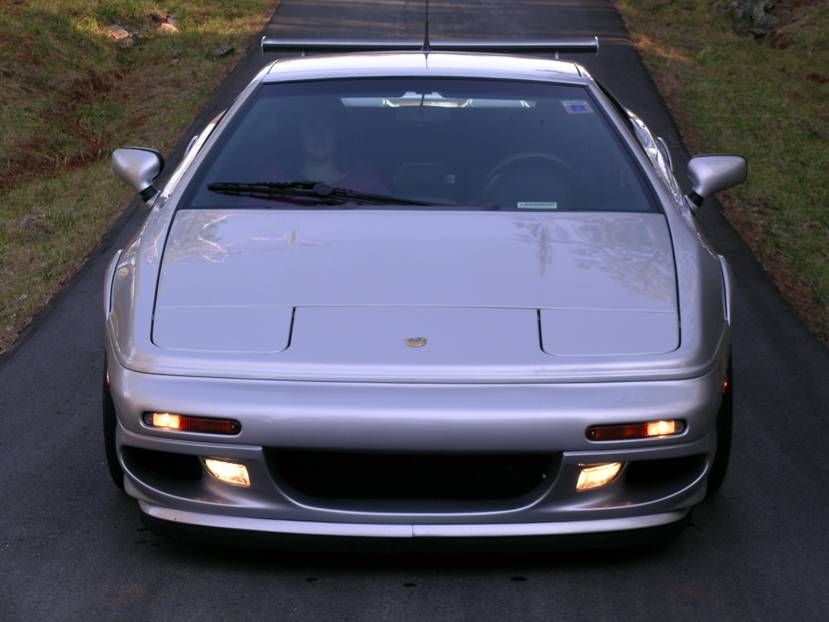1974 - 2002 Lotus Esprit
- Make: Array
- Model: 1974 - 2002 Lotus Esprit
- Horsepower: 349@ 6500
- Torque: 295@4250
- Transmission: 5-Speed Manual
- [do not use] Vehicle Model: Array
History
1972 Esprit Concept car unveiled
The November Turin Motorshow in Italy saw the unveiling of the Lotus Esprit concept car on Giorgio Giugiario’s Ital Design stand. Colin Chapman had seen the potential for a future mid-engined Lotus to replace the ageing Europa, and brought the car back to Hethel after the show to start the development process. Mike Kimberley and Tony Rudd led the M70 project, and the prototype work for the project took place at the recently purchased Ketteringham Hall.
1973/ 1974 Prototype vehicle development
These years saw the continued development of the Esprit with the first prototype vehicle running late in 1974.
1975 Paris Motor Show “Star of the Show”
With the development of the M70 Lotus Esprit Type 79 nearing the end, the first completed car was shown at the Paris Motor Show in October and was instantly awarded “Star of the Show”.
1976 Esprit starts production
In June 1976, the first Esprit came of the production line. The Giugiaro styled wedge shape exterior was the latest in modern design and philosophy. The great looks with stunning performance from the 160bhp 2 litre engine; its light weight together with the legendary Lotus ride and handling, projected the Esprit to Supercar status.
1977 “The Spy Who Loved Me”
In this year Lotus Cars and in particular the Esprit gained tremendous publicity with the release of the new James Bond film, “The Spy Who Loved Me”, with 007 emerging from the sea driving a submersible Esprit, arguably ‘one of the most famous car scenes of all time.’ In December the production of the S1 finished with 718 having been built
1978 S2 Esprit launched
The early part of the year saw the start of the production of the Esprit S2. The development of the S2 had ironed out many of the problems associated with the S1 such as poor interior noise. Many detailed improvements including a new front splitter, rear valance, new rear suspension and a new camshaft offered improved performance raising the top speed.
(see picture “Esprit S2”)
1979 Celebrating Formula 1 success
To commemorate the 1978 Formula 1 World Drivers and Constructors Championships and the success of the F1 Type 79 100 Special Edition black and gold liveried Esprits were produced, each numbered sequentially.
1980 New Turbo Esprit
The start of the year saw the S2 fitted with the new type 912 2.2 litre engine.Then, to every body’s surprise, a lavish party was held at the Royal Albert Hall in London during February to launch the new Turbo Esprit (Type 82). The first 100 were painted in the Essex Petroleum (the F1 sponsors at the time) colour scheme of Red, Blue and Silver. The Turbo Esprit was not a bolt-on turbo pack but was fitted with the new long stroke 910-turbo engine producing 210bhp. The Turbo Esprit came with a new wrap around front bumper and new splitter, new rear spoiler and side skirts, and an improved backbone chassis featuring a redesigned engine bay.
1981 The Lotus Esprit S3 announced
The Lotus Esprit S3 (Type 85) was announced to stand along side the Turbo Esprit. The S3 became an affordable Supercar, with a cost reduction of around 12% from the S2.2. The S3 had 76% of its components produced at the Hethel factory and carried over the efficient and effective S2.2 engine.
Once again the Esprit is the chosen car of 007 in the new James Bond film ‘For Your Eyes Only’. Bond took centre stage driving a fully equipped Turbo Esprit
1982 / 1983 Active Suspension for the Esprit
Lotus develops Active Suspension for the Esprit with ex F1 driver John Miles taking the wheel of the test car. This development was to pioneer the development of the 1987 Lotus active suspension Formula 1 car.
1984 –1986 Federalisation of the Turbo Esprit
S3 and Turbo production continues. With federalisation of the Turbo Esprit complete, 1427 Esprits were sold in these 3 years around the world.
1987 Introduction of the first Peter Stevens designed Esprit
This year marked the 21st Anniversary of Lotus at Hethel. This was celebrated by the introduction of the limited edition Turbo Esprit HC. The 16 valve 2.2litre engine was uprated to High Compression (HC) giving 215bhp and a top speed of 152mph. October saw the introduction of the first Peter Stevens designed Esprit. Stevens was able to re-draft the basic shape of the Esprit to such an extent that the Esprit was given a new lease of life.
1988 Lotus 40th anniversary
Lotus celebrated it’s 40th anniversary and a limited edition of 40 Esprit Turbos (as they were now known) were produced. The 40 cars were all painted in White Pearlescent paint with matching wheels, distinctive rear spoiler and blue interior.
1989 163 mph Esprit Turbo SE fitted
Lotus announced their fastest ever production car. May 1989 saw the introduction of the Esprit Turbo SE fitted with the 2.2 litre 16 valve engine developing 264bhp, giving performance 0-60 mph in 4.7seconds and a top speed of 163 mph.
1990 Esprit goes racing in the USA
Lotus enters the USA SCCA Race Series with the type 105. This heavily modified Esprit gained four victories and six pole positions in the eight races, finishing second overall in the championship. In October Lotus Cars USA put twenty SCCA World Challenge Racecar Replicas known as the X180R up for sale, with a top speed of in excess of 160mph and a 0-60 of 4.7seconds
1991 New vision
At the British Motor Show in October the Esprit range was shown with the new ‘High Wing’ which gave improved rear vision and the benefits of improved downforce. For this model the glass back was removed and replaced with an open tailgate with two oval vents on the engine cover, to reduce reward reflections and increase rear vision.
1992 Sport 300 hits the streets
Lotus unveiled their highest performance Esprit to date at the British Motorshow - the Sport 300. Developed from the X180R, this “race car for the road” offered a light weight body, race specification brakes, optional roll cage option and with 300bhp from the turbo and charge-cooled 2.2litre engine it was “at the time” the highest power/litre of any production car.
1993 Lotus returns to Le Mans
Russell Carr, current Chief of Design at Lotus, showed his first major design project with the new face lifted Esprit S4. The S4 updates included power steering as standard. Production of the Sport 300 production car began in May and Lotus returned to Le Mans in June with two Lotus Esprit Sport 300 racecars. This was the first works supported Lotus entry at Le Mans since 1962.
1994 Lotus Esprit S4s
The British Motor Show was the venue for the unveiling of the new Lotus Esprit S4s, with a 285bhp engine, new wheel and tyre package, uprated suspension and the rear wing from the Sport 300.
1995 400bhp version of the Sport 300
Lotus announces it’s involvement in the GT2 category of the global endurance GT championship. Team Drivers were Alessandro Zanardi and Alex Portman. This substantially new GT racer was based around a 400bhp version of the Sport 300 with its F1 style aerodynamics giving 30% more downforce than the road car.
1996 Lotus Esprit V8
The Geneva Motorshow in March saw the introduction of the Esprit V8. The Esprit V8 replaced the S4, S4s and Sport 300. The Lotus developed twin turbo 32 valve 3.5 litre V8 developed 350bhp and enabled the Esprit to hit 0-60mph in well under 5 seconds. The V8, meeting all global homologation would be the engine to take the Esprit into the new millenium. The GT3 was also introduced as an entry level Esprit. This was a stripped down version of the S4 using a 2.0 litre version of the 4 cylinder chargecooled engine.
1997 V8GT adopted the spirit of the GT3
October’s London Motor Show saw the introduction of the V8GT. This model adopted the spirit of the GT3 but with the V8 engine, and some of the luxury items of the V8 striped away, reducing the weight by around 50kg. All versions of the Esprit received a new style interior, including a new fascia with a smaller instrument binnacle, a new instrument layout to improve cockpit ergonomics and an all new heating and air conditioning system.
1998 The Sport 350 the most extreme road going Esprit supercar
The Birmingham Motor Show heralded the arrival of the Sport 350, the most extreme and focused development of the road going Esprit supercar ever to reach the market. The Sport 350 made intelligent use of the highest specification materials and components to give the car a true competition feel. Upgrades included race specification brakes, carbon fiber rear wing and Magnesium wheels, with a top speed of 175mph.
1999 The last four cylinder Esprit
With the introduction of new emissions legislation, the decision was made to remove the four cylinder Esprit from the line up and go forward with V8 models. To this date a total of 9186 four cylinder Esprits had been built.
2000 Lotus produces the 60,000th Lotus car
The new millennium broke two major milestones the manufacture of both the 60,000th Lotus road car the 10,000th Esprit.
2001 02MY Esprit released in November
The new 02MY Esprit was released in November with many improvements made to both the interior and the exterior including a redesigned rear light panel and light clusters adapting design elements used in the 2001 Elise.
2002 The Esprit reaches a milestone
The Esprit reaches a milestone in it’s illustrious history when it celebrates it’s 30th birthday. The 2002MY Esprit would not only celebrate the 30years from concept but also, as importantly, celebrate 25 years of the Esprit in the important USA market. From the 1972 concept car to first production car in1976, through to the Esprit of today, the Esprit is universally accepted as being one of the world’s finest sports cars.
-----
Esprit V8
At the London Motorshow Lotus presents the 1998 model year of the fastest and most powerful Esprit to date – the V8. This new model year incorporates extensive improvements including:
- a completely restyled interior
- new HVAC (heating, ventilation and air conditioning) controls
- a new twin plate clutch and clutch hydraulic system,
- a revised gearbox system and selector mechanism
- a refined ABS braking system
- a new windscreen wiper system
- a new alarm system
This classic British supercar is elevated to new levels of performance, refinement, and driveability with the installation of the all-new Lotus-designed 3.5 litre turbocharged engine. With up to 260kW available, the certified maximum speed reaches 282 km/h, while the 0-100 km/h time is 4.5 seconds. A new braking system has been developed to ensure that the legendary Lotus chassis performance matches the power of the new engine.
A package of changes and improvements has also been made to the chassis to compliment this exciting and well-mannered powerhouse. The most significant of these is the introduction of a new state-of-the art three-channel ABS braking system supplied by Kelsey-Hayes, one of the largest brake system manufacturers in the USA. The new servo-operated brake system supersedes the previous powered brake system, and ensures that even more control and feedback is available to the driver under braking.
The Lotus Esprit V8 has a front valance with a larger air intake and “winglets” ahead of the front wheelarches. Two chrome tailpipes add purpose to the rear valance, one each side of the car.
The result is an even more refined and responsive Esprit to meet all our customers requirements, offering an exciting blend of power, chassis performance and pure driving satisfaction.
The Esprit V8 is powered by the Lotus designed 3.5 litre twin turbocharged V8 engine. This advanced engine meets all global homologation criteria for the year 2000.
With up to 350 bhp (260 kW) at 6500 rpm available, the Esprit V8 accelerates from 0-100km/h (0-62mph) in 4.9 seconds, 0-160km/h in 10.3 seconds (0-100mph in 10.54 seconds) before reaching a certified top speed of 283km/h (175 mph).
A wide torque band with a peak of 400 Nm (295 ftlb) at 4250 rpm assures an incredibly smooth power delivery and an effortless but rapid acceleration in all five gears.
The introduction of a new, specially developed, AP Racing twin plate pull-actuated low inertia clutch and actuation mechanism together with a redesigned bell housing notably enhances drivability.
A clutch hydraulic system with lightweight components - master cylinder, slave cylinder, push rod and hydraulic pipes - specifically developed for the Esprit by clutch specialists FTE of Germany, reduces pedal effort to give a lighter feel, greater smoothness and ease of handling.
A new gear shift system and a re-engineered gearbox selector mechanism give even greater shift precision.
Now, gear changing is quicker and the engine is even more responsive and free revving due to the lower inertia clutch assembly. A new light weight Kelsey Hayes ABS braking system enhances stopping performance and increases vehicle stability in extreme conditions while maintaining a progressive feel.
A New Interior
The new fascia has been designed to maximise interior space, ergonomically improve the layout of the instrumentation and controls. The hand-finished leather trim and race-bred heritage combine to produce an exciting blend of luxury and the ultimate driving experience.
The new, smaller binnacle, centre console and lowered tunnel top all combine to make the cabin much more spacious while graphically wrapping around the driver. The instrument layout has been honed down to the absolute minimum. The four highly legible VDO instruments: speedometer incorporating a LCD odometer and trip, electronic rev-counter, fuel and temperature gauges, together with the warning and indicator lamps, are all laid out for maximum clarity.
The centre console has been dramatically improved with all the primary and secondary controls, including new electric window switches, within easy reach of the driver and passenger.
Fuel tank release, dashboard rheostat, window override and alarm immobiliser are now discretely housed within the tunnel behind the gear lever.The result is a more spacious, ergonomic cabin.
On-board comfort is further improved with new HVAC controls and graphics. The introduction of electronic temperature and distribution controls together with repositioned air vents mean that cabin temperature and air distribution can be more
precisely controlled to provide an ideal driving environment.
Refined Exterior Appearance
The rear wing has been re-designed to compliment the lines of the Esprit whilst improving its functionality and giving the car a more aggressive stance.
The wing is now mounted on the tailgate improving access to the luggage compartment and higher to increase both rear visibility while retaining high speed stability.
A new wiper has been designed comprising a new wiper arm and blade. This new pantograph wiper system improves screen clearing with an increased sweep area and quieter operation. The windscreen wash system also adopts a more powerful pump and a larger capacity reservoir.
The V8 Esprit configuration was completed by the introduction of a new Cobra alarm system. This EC approved Thatcham Category 1 system incorporates remote arming and disarming, central locking and key operated dead locking on both driver and passenger doors.
The “Esprit V8” logo is displayed on the rear side windows, and echoed in a small “V8” badge set into the rear number-plate surround, opposite the Lotus logo.
A new variable-displacement air conditioning compressor is packaged with the new V8 engine, ensuring better climate control while at the same time reducing the power consumed and minimising engine load variation.
Behind the driver, the V8 engine drives through a revised 5-speed manual transaxle, via a new A.P. Racing Twin Plate pull-actuated clutch. The transaxle now has synchromesh on reverse in addition to all five forward gears. An extended 5th gear, giving 41.015 km/h/1000 rpm (25.485 mph/1000 rpm) is fitted to provide a more refined high-speed cruise and a higher top speed.
A great deal of attention has been paid to the packaging of the engine bay area, to present the engine in a neat and uncluttered installation. Not only has this been achieved, but the luggage space has also been increased, despite the greater complexity of emission and exhaust systems. The V8 engine is so compact that it packages within the space formerly occupied by the Lotus 4-cylinder unit.
The base engine is built to this one specification for all markets, with a combined primary and secondary 3-way catalyst unit for each bank of cylinders.
Not only has the Lotus Esprit V8 the strongest performance of any production Lotus to date, it is also one of the quietest, to meet the latest noise regulations. The current EC standard demands 75 dB(A) or less on the Drive-by test, which the new Esprit package achieves satisfactorily. This test forms part of the European Type Approval programme, which was completed in November 1995.
The new Lotus Esprit V8 is a powerful reminder of the appeal of this classic British sportscar. Few others can offer such an exciting blend of power, refinement, chassis performance, and pure driving satisfaction.
The Esprit V8 was available in European and US specification markets, in both left-hand and right-hand drive and could be personalised with a full range of options.
-----
LOTUS ESPRIT SPORT 350
The Lotus Esprit Sport 350 was the most extreme and focused development of the classic Esprit supercar ever to reach the market.
Building on the racing heritage of Lotus, the Esprit Sport 350 uses much of the technology and knowledge gained racing Esprit at national and international level in GT championships around the globe. The model is inspired by Esprit such as the X180R (which won the IMSA Championship), the Sport 300, and the Type 114 Esprit V8 GT1 which competed so successfully in the BPR Gobal GT Championships in 1996, and which continues to win national series races in Germany, Holland and Great Britain.
Developed to provide real driving challenge, the Esprit Sport 350 combines competition features with the supreme refinement and driveability of the V8 to deliver the ultimate in performance and handling and the experience of a pure GT car for the road.
The intelligent use of the highest specification materials and components gives the car a true competition feel while introducing substantial weight savings making the car almost 80kg lighter than the standard Esprit V8.
The lightweight body construction is distinguished from other models in the Esprit range through its distinctive aluminium colour with blue highlights in the Lotus mouth shaped front air intake and side breather vents together with Sport 350 decals and monograms.
An ultra lightweight carbon fibre rear wing with aggressive side fins - originally developed for the Lotus type 115 GT race car- is high mounted on lightweight skeletal milled aluminium uprights.
An extra-deep front lower lip spoiler and splitter give the car an aggressive squat stance and assist aerodynamnics by reducing the amount of air being forced under the vehicle at speed.
OZ Racing charcoal grey, five spoke chrono magnesio wheels – the lightest road wheels available and specially designed for Lotus - have been fitted with super sticky and soft Pirelli PZeros front and wider to the rear to give increased rear traction.
Stiffer track developed Eibach road springs and Monroe dampers have been tuned specifically for this ultimate supercar. Not only will the Esprit Sport 350 be a class leading mover but it will also be a class leading stopper. Powerful 4 pot callipers with an advanced Kelsey Hayes ABS system are coupled with new, larger diameter 320mm AP Racing two piece brake discs which are vented and cross drilled, both front and rear, for maximum cooling and heat dissipation when the car is subjected to sustained heavy braking.
The Lotus 918 V8 twin turbocharged engine, one of the most advanced engines in production today - is at the heart of the Esprit Sport 350. Thoughtful design has given an efficient, compact and lightweight (less than 220kg complete with all ancillaries) engine that easily produces 100hp per litre in standard road form. Racing versions are currently producing over 550hp with very few changes from the standard road engine. A blue plenum and cam covers distinguish the 918 engine used on this variant from the other models in the Esprit range. An optional sports exhaust is available for aftermarket and track use.
Electronic engineers at Lotus have recalibrated the ECM revising the toque application in lower gears giving quicker in-gear acceleration. This gives more flexibility for the most demanding race tracks and roads as well as increasing the driving ease of this most accessible and useable of supercars.
With a maximum of 350 hp (260 kW) at 6500 rpm the Sport 350 has predicted performance figures of 4.6 seconds from 0 to 100 km/h (0 - 62 mph) and 0-160km/h in 10.05 seconds (and 0-100 mph in 10.2 seconds) before reaching a top speed of 282 km/h (175 mph).
The 918 engine is linked to the lightweight efficient UN1 gearbox at the drivetrain end and drilled aluminium brace, clutch, brake and throttle pedals in the cockpit.
The interior of the vehicle has been adapted to incorporate competition components while retaining all the necessary comfort and elegance of a road going car.
A Momo “Shuttle” 350mm diameter steering wheel with offset hub gives both comfort and dynamic improvements and can be dealer fitted. The vertical offset places the driver in a more comfortable and more efficient prone racing position providing greater feedback and intensifying the feel of the Esprit driving experience. Knee clearance has also been increased for larger drivers both when driving and entering or exiting the car.
Genuine carbon fibre is used extensively in the cockpit; the Instrument Binnacle Cover, Centre Vent Cover, Centre Switch Panel and Centre consul are all produced in this ultra-lightweight material. Anodised Aluminium is used to give an elegant, technological and lightweight finish to the instrument mask, gear lever surround and gear knob. Seating is provided by adjustable bucket seats with revised lumbar and lateral support for the driver and passenger.
The highly distinctive Sport 350, available in Europe from December 1998, will be produced in a numbered edition of just 50 vehicles available in one, exclusive aluminium and blue colour scheme.
-----
Lotus Esprit 2002
In 2002, the Lotus Esprit reaches a milestone in its illustrious history. Unveiled in 1972 as a styling concept at the Turin Motorshow, the Esprit entered production in the mid 1970’s and today is accepted as being one of the world's finest supercars.
To celebrate 30 years of this performance car, Lotus has given the Esprit a facelift as Russell Carr, Chief of Design at Lotus, explains:
“The Lotus Esprit is an iconic design, a classic blend of traditional supercar razor sharp edges combined with design elements that have evolved over three decades. Therefore we decided not to change the car dramatically for 2002 as this would be changing the true spirit of the Esprit, a classic supercar."
The redesigned rear panel and light cluster, which features round rear lights set in pairs, carry over some of the Elise design elements. The front of the Esprit has inherited the lip spoiler from the legendary Sport 350 ensuring greater stability at very high speeds.
Many subtle changes can also be seen in the interior too. The new high backed seats featuring an embossed Lotus logo are available in two tone leather and are a no cost option. A distinct aluminium theme features throughout the interior providing an elegant, technological, lightweight finish to the gear lever, handbrake sleeve, inner door panel and new inner door sill which also features the Lotus logo.
The new “crystal titanium” finish multi spoke OZ Racing alloy wheels hide powerful 4-pot calipers with an advanced Kelsey Hayes ABS system. Large 320mm diameter AP Racing two piece brake discs are vented and cross-drilled, front and rear, for maximum cooling and heat dissipation when the car is subjected to sustained heavy braking. The race specification calipers, pads and discs ensure that the Esprit stops as well as it goes.
The Esprit V8 is powered by the Lotus designed 3.5 litre twin turbocharged V8 engine producing 350 hp at 6,500 rpm with racing versions currently producing over 550 hp with very few changes from the standard road engine! The product of thoughtful design, the engine is efficient, compact and lightweight (weighing less than 220kg complete with all ancillaries.) A wide torque band with a peak of 400 Nm (295 ft.lb.) at 4,250 rpm assures an incredibly smooth power delivery and an effortless but rapid acceleration in all five gears.
For many, the Esprit is a car of both memories and dreams. From being James Bond’s versatile high performance transport in the 1970s and 1980s to maintaining the crown of Britain’s great supercar, the Esprit is really in an unstoppable class of its own.

